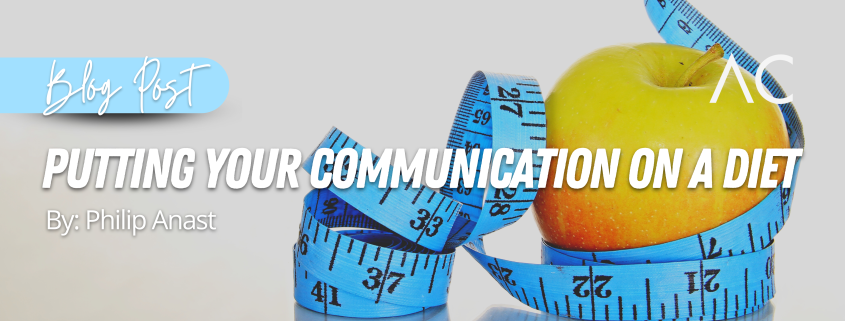
by Jodi Amendola | Nov 30, 2022 | Blog
Blink and the media landscape changes: a magazine goes out of business, one company acquires another, a podcast launches.
Blink again and something else has changed.
In the nearly 20 years since I founded Amendola Communications, the media landscape for healthcare and healthcare technology has changed dramatically. Publications that I assumed would last forever are long gone while others have sprouted in their place. The dominant medium has shifted from print to digital and the lead time for news has shrunk from days and weeks to, well, almost nothing.
The number of journalists covering healthcare is also greatly reduced. The big publications once had mastheads with multiple editors and reporters; now, most have only a few and they’re juggling podcasting and social media duties along with reporting and writing.
I hate to see any media outlet vanish. That’s partly for selfish reasons; fewer outlets means fewer places we can pitch. But it’s also because I love journalism and I love helping clients get their news out.
But nostalgia is an indulgence, not a business model.
That’s why, amidst all the change, Amendola Communications remains focused on the constants: the need for companies to spread the word about their products and services and the interest in them among the industry. While there might be fewer media outlets now, there is more healthcare news and content than ever before and it’s just as important to get it seen.
So we’ve adapted our approach. Rather than primarily pitching media interviews, we now do a lot more content development where we conceive a story idea, pitch it to a media outlet, and then have one of our writers create a draft that is vendor-neutral and publishable.
Another example of adaptability is how we’ve had to change our approach to media interviews at key trade shows, such as HIMSS, HLTH and others. Instead of only relying on in-person interviews at the shows, we have been super-aggressive in securing more podcast and video interview opportunities for our clients as well as focusing on pre-and-post show news coverage.
We also now operate in a world where clients are less dependent on third-party outlets. Companies have acquired the ability to speak directly to customers through their own blogs, emails, websites, social media, webinars, podcasts and, in some cases, publications. Indeed, consumers now expect a more direct link with and greater insight into the companies they work with and those businesses can no longer depend on third-party media to provide that.
This good news is that this allows businesses to be more creative, comprehensive and in control of how their images are presented and how their stories are told. A big part of what we do now at Amendola is creating content for our customers and advising them on the best format for that information.
In an ever-changing environment, the greatest necessity for ourselves and our clients is adaptability in how we craft and deliver our messages.

by Philip Anast | Nov 9, 2022 | Blog
On the cusp of a new year, many of us start thinking about exercise regimens. But the founders of Politico and Axios recommend we put our “prose on a diet.” In their book, “Smart Brevity,” they spell out effective ways to communicate in a world of 24×7 news cycles and social media.
Theirs isn’t the first book to detail better ways to write. But they do build off the seminal “The Elements of Style” to account for our 21st century digital age.
Citing various research studies, they suggest that we’re “overindulging in words” and that we need to pay attention to how “people consume content,” and to “communicate to save people time.” The key is to get people focused “on what matters most.” That’s what they’ve done with their Axios newsletters, i.e., structured them in a way to inform, but also linking to the details if readers want to go deeper. Go “short, not shallow,” “with simplicity and brevity,” is their mantra.
In order to get people to understand what we’re saying, PR professionals also need to package content so it answers two questions:
- What’s new? (i.e., tell me something I don’t know.)
- Why does it matter?
It’s particularly important to be memorable in the subject line, be it in business communications or a story pitch to a reporter. The authors recommend no more than six words, grabbing the reader’s attention.
In the body of a communication, they also recommend bold-facing key points and using bullets to “impose rhythm.” The first sentence is important because it may be the only opportunity to “tell someone what they need to know.”
Here are other key takeaways, many already known, but still good reminders for anyone in the business of writing and communicating:
- Single out the person you want to reach
- Be simple and direct
- Use the right words
- As Mark Twain once said, “The difference between the almost right word and the right word is really a large matter—it’s the difference between the lightning bug and the lightning.”
- Sharpen thoughts and ideas
- “Deliver depth, detail and nuance more quickly”
- Less is more
- Use active verbs always
- Write direct, declarative sentences
- Use one-syllable words in lieu of two- and three-syllable ones
- “Tell me a story; don’t tell me about a story”
One thing I found interesting was their recommendation to use emojis in e-mail subject lines, as a means to stand out.
The book also includes chapters with best practices for writing e-mails and presentations, running meetings, writing speeches, building visuals, doing social media, and running companies.
The ultimate goal is to “win the war for attention,” and this book provides a worthy playbook for doing so.

by Chris Nerney | Oct 19, 2022 | Blog
Anyone who has been in marketing eventually is advised to “write like an eighth grader.” People who offer this advice may cite legitimate literacy studies showing that the “average American” reads at the level of a seventh- or eighth-grader. If that is true (especially since more than 90% of adult Americans 25 years or older have graduated from high school), I’d like to have a word with our education system.
Maybe this is unfair, but when I hear people say, “write like an eighth-grader,” it sounds a lot to me like “dumb it down.” Yes, I fully agree that marketers should express themselves simply and directly. As a consumer or B2B buyer, I wouldn’t have it any other way! Who has time for a lot of smoke and mirrors or hyperbole? We’re all busy and just want to solve our problems or enable opportunities.
Technology can be very difficult to understand, let alone explain – healthcare technology even more so. And don’t get me started about life sciences and advanced medicine. But it’s our job to make sure we’re getting our clients’ messages across in a crowded, noisy market.
Take this blog post. I am not writing this at an eighth-grade level because my target audience is marketers and healthcare professionals, and I’m supremely confident that most of the people in those jobs can handle a flashy four-syllable word or two.
Going back further, I’ve been writing about enterprise technology and healthcare technology for many years. My primary target audience has been CXOs, the people who make buying decisions or can influence buying decisions. CXOs tends to be well-educated and articulate. If they were placed back in middle school today, I’m convinced most would get gold stars for their outstanding reading ability. I believe in you, CXOs!
So while “write like an eighth-grader” is a pithy and memorable phrase that will get you lots of likes and fond references to Strunk and White on LinkedIn, understanding your audience and writing to their level is much better advice. If you do this effectively, you can connect with existing and potential customers on a human level, show you understand their problems and needs, and persuade them that you have the right solution. And that’s how sales are made and brands are built.
Resist SEO tyranny
Speaking of connecting on a human level, digital marketers also are constantly told they must “write for SEO” (search engine optimization) – almost always, incidentally, by SEO experts. (Just sayin’! 🤣) This process may require clumsily shoehorning highly rated “keywords” into the first 100 words of your text, writing “compelling” meta descriptions, inserting links in the text (but not too many), and other best practices that can change depending on Google’s latest search engine tweaks.
When I was freelancer, I worked for a content company whose platform literally wouldn’t allow you to submit an article unless it met about a dozen SEO criteria. The pain and shame of mutilating my copy to meet the exacting standards of a string of code in C++ forever will haunt me.
I don’t know much about SEO, but I do know a lot of smart people believe in its ability to help improve Google search rankings and raise a company’s visibility. But I worry that an excessive emphasis on SEO eventually can be counterproductive because the writer ends up writing to an algorithm. Not only does that feel restrictive, but you run the risk of sounding like everyone else writing SEO-driven copy.
SEO is a tool. “Write like an eighth-grader” is a concept. Don’t let either get in the way of you communicating on a human level with your target audience. Yes, you should be concise and direct, but there’s nothing wrong with showing a little personality or using humor when appropriate. These techniques might not register with an algorithm, but they will help your company or client connect with plenty of people on a human level. And that’s worth a lot.

by Jim Sweeney | Sep 7, 2022 | Blog
Imagine your boss issues the following email at the end of the day: “I’m bringing in bagels tomorrow morning.”
Yay, bagels! You make a mental note to skip breakfast tomorrow to make room for schmear.
Then your boss emails: “I’m going to prioritize bringing in bagels tomorrow morning.”
OK, a little less definite, but still a high probability of bagels. I mean, it’s a priority, right?
Then, a third email: “I’m going to focus on prioritizing bringing in bagels tomorrow morning.”
Bagels are starting to look iffy.
And, finally, she writes: “I’m beginning the process of focusing on prioritizing bringing in bagels tomorrow morning.”
Does that leave you with any hope of bagels? No, it does not. It’s just going to be you and your Cheerios tomorrow morning.
Your boss might be every bit as sincere in her last statement as in her first, but she won’t be able to convince anyone of that. Her original statement about bringing in bagels has been diluted by the addition of “beginning the process,” “prioritize” and “focus” — vampire words and phrases that drain the vitality out of writing and weaken our communications.
Business writing is a Transylvania full of vampire words that fasten themselves onto perfectly good sentences, suck them dry and leave them limp and bloodless on the page. What should have been a simple memo or email gets cluttered with unnecessary qualifying phrases until sentences collapse of their own ponderousness and lack of clarity.
But this isn’t simply a matter of style. Vampire words also imply a lack of commitment and purpose, even a sense of self-doubt. Compare these two sentences:
Team A will analyze the results and deliver a recommendation.
Team B will focus on analyzing the results and leverage its assets to prioritize delivering a recommendation.
Which team do you trust to deliver a recommendation? The action in Team B —analyzing results and delivering a recommendation — is besieged by vampire words and left sounding uncertain and indefinite.
But there’s good news. According to folklore, vampires can’t come into your house without an invitation. Likewise, vampire words can’t enter your writing without you allowing it.
Since that’s the case, why do we invite the bloodsuckers in?
A lot of it stems from an unmerited distrust of the simple declarative sentence. Remember those grade school sentences about Dick and Jane going out to play? Or the Hemingway you read in high school? That simple, straightforward style works in business writing, as well:
We will deliver the report by the end of the month.
We will conduct an A/B test on the competing headlines and report the results.
The test group liked the blue logo better than the red one.
I know what you’re thinking: Those are short sentences composed of short words. What if people think I don’t know any big words or can’t write long sentences? What if people think I can’t twist incentive into a verb?
Rest easy. Put yourself in the shoes of the recipient of a white paper or report composed of clear, direct language and free of vampire words. Wouldn’t that be refreshing? Wouldn’t it be nice to finish the text without any lingering doubt as to what parts of it meant or whether you peered hard enough between the lines?
Communicating clearly and simply with business associates and clients – with minimal jargon as my colleague Megan Moriarty would say – might astonish them at first, but they’ll come to appreciate it. And, who knows, they might even reciprocate. Think of the misunderstandings and confusion that could be avoided.
So review your business writing and drive stakes through those vampire words. If necessary, hang a string of garlic cloves over your laptop as a reminder.

by Jodi Amendola | Aug 17, 2022 | Blog
I’ve always felt like I was born to be an entrepreneur; leading a company is in my blood because both of my parents started their own businesses.
I was always a “go-getter.” When I was 18, I took a commission-only summer job selling Cutco knives, and within a month I broke all the sales records and was a top producer. At the age of 20, I started my first business, which was a storage company that targeted college students in Boston who needed a place to store their personal items for the summer. About 500 students signed up, and in a few months, we turned a profit of more than $8,000.
After the requisite tour of duty in Corporate America doing public relations, I took a leap of faith and co-founded Amendola Communications with my husband Ted. Within six weeks, I had five retainer clients.
The rest, as they say, is history.
Of course, it hasn’t always been easy. From a shifting media landscape to evolving client expectations to a crippling pandemic, numerous challenges have popped up over the years. To surmount these obstacles, we’ve always been nimble and able to pivot when we need to. Instead of trying to force a square peg into a round hole, we’ve gotten good at shaving the edges off the peg.
Here are five important lessons I’ve learned along the way about leadership and leading a company:
- Hire where the talent is: When I started Amendola, I wanted to build a workforce in Scottsdale. Well, I did it, but I quickly discovered that when you don’t hire seasoned people in your market niche, it shows. The ramp-up time is too long and the quality of the work is sub-par, which means we couldn’t move up to the next level of clients. As I shared in this post, once I took location out of the equation things got much better.
- Don’t try to do it all yourself: I was raised as a PR person, and loved doing pitching, managing accounts, and all the other hands-on pieces of the business. But it didn’t take long to figure out that while I was working on today’s clients, no one was out finding tomorrow’s. That’s a quick way to succeed yourself out of business. So I hired some good people and gave up doing the day-to-day work to focus on business development, which is my superpower. We instantly became more profitable, and I found myself having a lot more fun.
- Know what your company is good at and stick with it: You can’t possibly be all things to all people, nor should you try. Instead of taking on work that doesn’t suit your organization, whether it’s the wrong type of work, or the wrong market, or the wrong size of client, figure out where your niche is and focus your efforts there. If you do get asked to do something that you are not good at, refer the person who asked to someone who can do what they need. It’s a small world, and the odds are the good you do today will come back to you later.
- Hire people you like, that share the same philosophy, and fit in well with your work culture: It’s easy to fall in love with someone’s talent, but if they’re not a good personality fit, it can destroy the culture. And all it takes is one bad apple to turn a great place to work into a bad one. Hire the people who fit what you want your organization to be. Every couple of years we do an all-company retreat to a non-work area. Those are some of the best times because we have such a great staff of people and enjoy working together as well as mingling and socializing with each other. We care about each other and that comes from the top down.
- Try before you buy: If writing is important to your business, as it is in mine, don’t take people’s word for it that they are good writers. I think 80% of the country thinks they can write, but only maybe 20% can, at least to the level we need. Test every potential writer with a writing test, even if you love their samples. You never know if what you’re reading is their work or whether what they did was propped up by a great editor. It’s like the old saw says: trust but verify.
Leading a company will always have its challenges, but I have found that following these valuable lessons has helped pave the road to long-term success.

by Janet Mordecai | Jul 27, 2022 | Blog
A value proposition is a simple statement that tells your customers and prospects why you are in business. At its core, it’s the promise your company gives customers about what it will deliver and why they should choose your product.
Value propositions form the foundation of marketing campaigns and sales pitches, so they can’t be vague or too general. The stronger the statement, the easier it will be to sell your product or services.
Putting in the pre-work to build a rock-solid value proposition is well worth the effort and will help you include precise results that benefit customers. By following these three steps, you can create a value statement that sells:
STEP 1: Define your target market and ideal customers
Start by defining the most likely buyer of your product or services. You can conduct formal research using a third-party vendor or informal research on the internet. Narrow down your target by asking answering the following questions:
- Is your target a person or a business?
- Where are they located?
- What do they think or know about your current brand?
- If a person, how old are they? What gender? What is their socio-economic background?
- Who else is competing for their loyalty in your market space?
- Where does your target go to find information, e.g., Facebook, LinkedIn, Twitter?
- What are their pain points?
- What do they value?
STEP 2: Identify the problem you are trying to solve
How will you know if customers will buy your product or service? The answer is you must identify the problem(s) you are trying to solve. Otherwise, your solution won’t resonate with the customers you specified above.
To clearly articulate the problem, think of your customer pain points as unmet needs. Then, answer the question, “How will your product or service specifically meet those needs?”
Examples of customer pain points include:
- Inconsistent customer experiences
- Poor quality of service or products
- Complicated buying process
- Not available on a preferred channel
- Too expensive for what it delivers
STEP 3: Identify your unique market differentiators
To outperform competitors, you must identify distinguishing characteristics that only your company can own. These should be unique. If potential customers believe all available offerings deliver the same value, they will buy whatever’s available at the lowest price.
Ask questions that identify what benefits customers will gain from working with you. Examples of market advantages include:
- Reputation – Employees, customers, partners, and the public hold positive opinions about your organization.
- Innovation – The capability to develop new approaches using new or proprietary technology.
- Customer Satisfaction – Processes and approaches consistently pleasing customers and resolving issues quickly.
- A unique geographic location – Easier access to services for customer convenience.
- Recognition – A logo and Brand image are quickly recognized and associated with quality.
Need more help? You can find free value proposition templates on marketing sites like Hubspot or check out this post from the Amendola blog.





